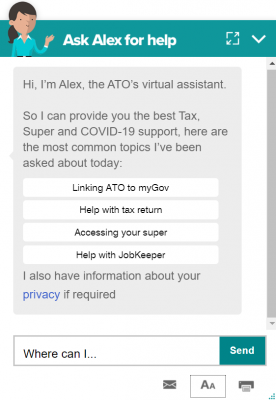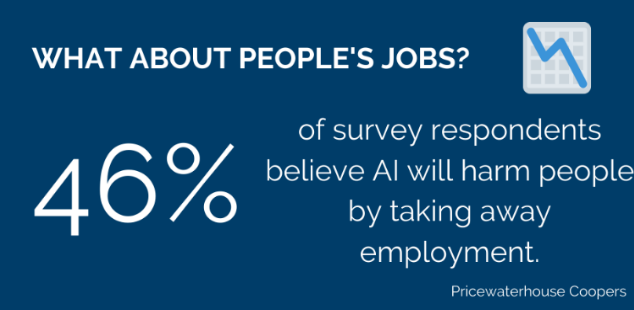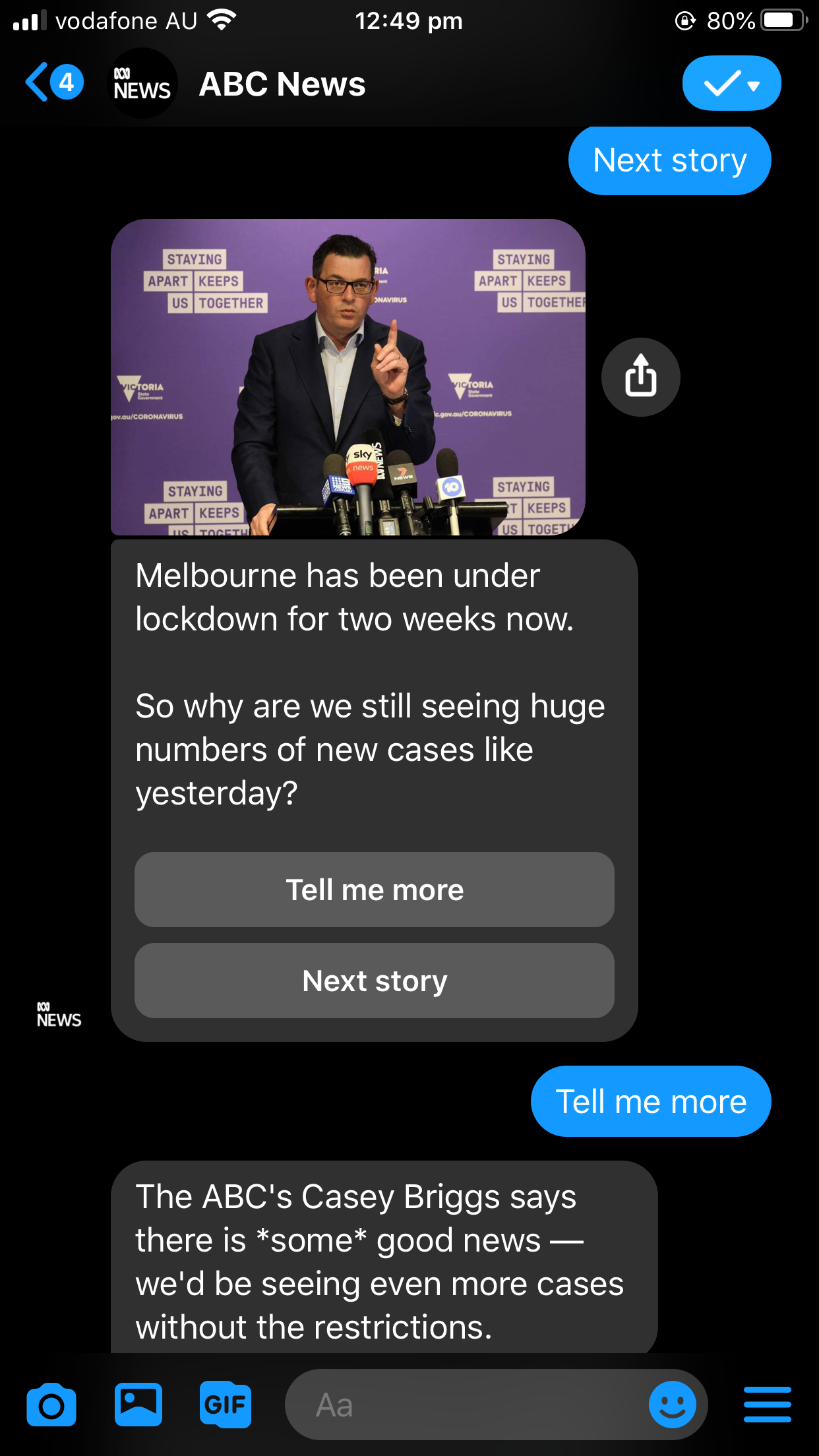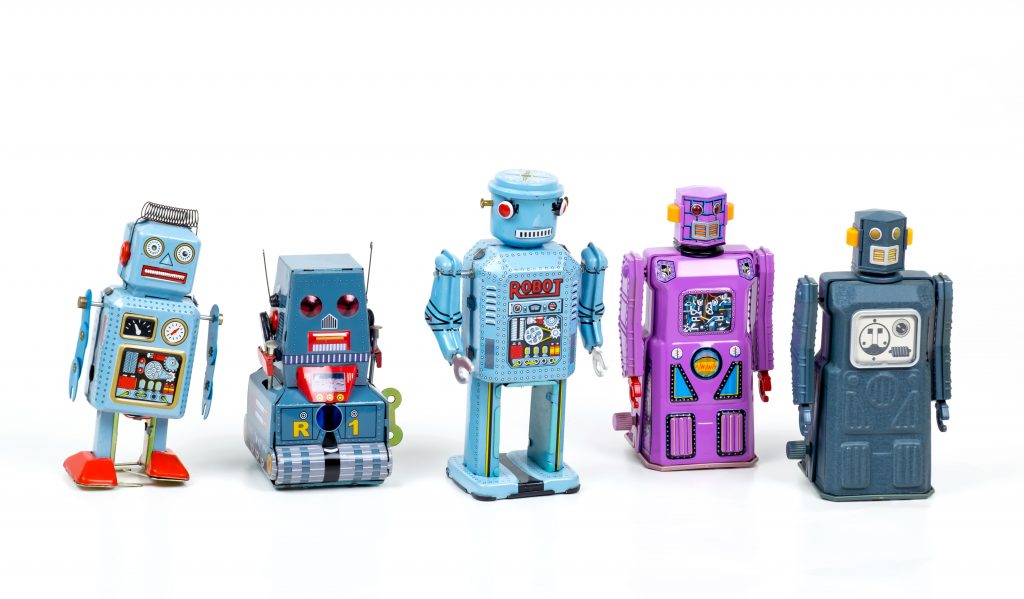Chatbots present communicators with an important technological frontier. Though controversial, they have the potential to revolutionise how government and citizens interact.
In this first instalment of A communicator’s guide to… we’ll explore how the Australian Government is currently using chatbots. We’ll examine the enormous potential of the technology and highlight challenges to bear in mind.
How is the government using chatbots?
Over the past few years, a number of government agencies have used live chat platforms to supplement their comms, hinting at the importance of this tool to manage citizen communications.
At the start of the COVID-19 pandemic, the Government created a chatbot, available via WhatsApp. The bot provides you with information about the latest COVID-19 figures, symptoms, government advice and tips about social distancing.
The Australian Broadcasting Corporation (ABC) has a functionality within Facebook’s Messenger App, updating users on breaking news and the day’s top stories.
Meanwhile, the Australian Tax Office (ATO) has a chatbot named Alex, which provides information about myTax and small business assistance. The Department of Health’s offering, Sam, provides insights into the department’s services. You can even tell Sam your symptoms and it can point you in the direction of the relevant resources.
HOW IS THE GOVERNMENT USING CHATBOTS?
Over the past few years, a number of government agencies have used live chat platforms to supplement their comms, hinting at the importance of this tool to manage citizen communications.
At the start of the COVID-19 pandemic, the Government created a chatbot, available via WhatsApp. The bot provides you with information about the latest COVID-19 figures, symptoms, government advice and tips about social distancing.
The Australian Broadcasting Corporation (ABC) has a functionality within Facebook’s Messenger App, updating users on breaking news and the day’s top stories.
Meanwhile, the Australian Tax Office (ATO) has a chatbot named Alex, which provides information about myTax and small business assistance. The Department of Health’s offering, Sam, provides insights into the department’s services. You can even tell Sam your symptoms and it can point you in the direction of the relevant resources.

The challenges of chatbots
Despite their enormous potential, there are a number of moral, legal and technical challenges associated with using chatbots. Government needs to be aware of these challenges in order to prevent errors and abuses before they happen.
Currently, the technology is coming under fire for being too mechanical, possessing a high error rate and lacking relevant information. However, it’s likely that these challenges will be ironed out as the technology develops. Instead, new, more daunting challenges will arise:
There is also a fear that chatbots could lead to job losses. The balance between using technology or humans to communicate with citizens will be a delicate issue for governments to tackle.


 This is important because citizens generally want to know to whom, or to what, they are revealing private information.
This is important because citizens generally want to know to whom, or to what, they are revealing private information.
Other potential regulatory issues include: what chatbots can do, what they can see, how much they can reveal, the cyber security of bot-human interactions and the scope of the information that they can request from bot users.
There is also a fear that chatbots could lead to job losses. The balance between using technology or humans to communicate with citizens will be a delicate issue for governments to tackle.
The days of human-like interactions from chatbots are still a while away, and until then, they can help streamline citizen communication, allowing public servants to spend their valuable time addressing the more complicated or specific enquiries, creating efficiencies for the APS and for the citizen.


 The future of chatbots
The future of chatbots
 Chatbots will only become more advanced in the future. Eventually, they will be able to display emotions, talk with you in a friendly manner, answer almost any question and explain complex government policies in plain English. That’s the goal, at least…
Chatbots will only become more advanced in the future. Eventually, they will be able to display emotions, talk with you in a friendly manner, answer almost any question and explain complex government policies in plain English. That’s the goal, at least…
Importantly, the technology could also engage with citizens to collect feedback on their experience with government services. They could be used by emergency services agencies, providing answers to urgent questions around the clock, or to give advice to citizens on a range of issues.
The Government is catching on to the benefit of integrating chatbots into popular messaging apps like Facebook Messenger and WhatsApp. This will likely be the home of chatbots in the future – if the users will accept the prospect of chatting to the Australian Government on the same platform that they chat to their best friend…


 For communications professionals, chatbots are already an important part of strategies, and as the people who create the flow charts and language behind the bots, the ability for communicators to deeply understand the flow of natural human dialogue will be an important skill.
For communications professionals, chatbots are already an important part of strategies, and as the people who create the flow charts and language behind the bots, the ability for communicators to deeply understand the flow of natural human dialogue will be an important skill.
By encouraging communications professionals to communicate in a friendly and conversational manner, chatbots will increase awareness of government services among the Australian public. This is undoubtedly the greatest benefit that chatbots will deliver.
